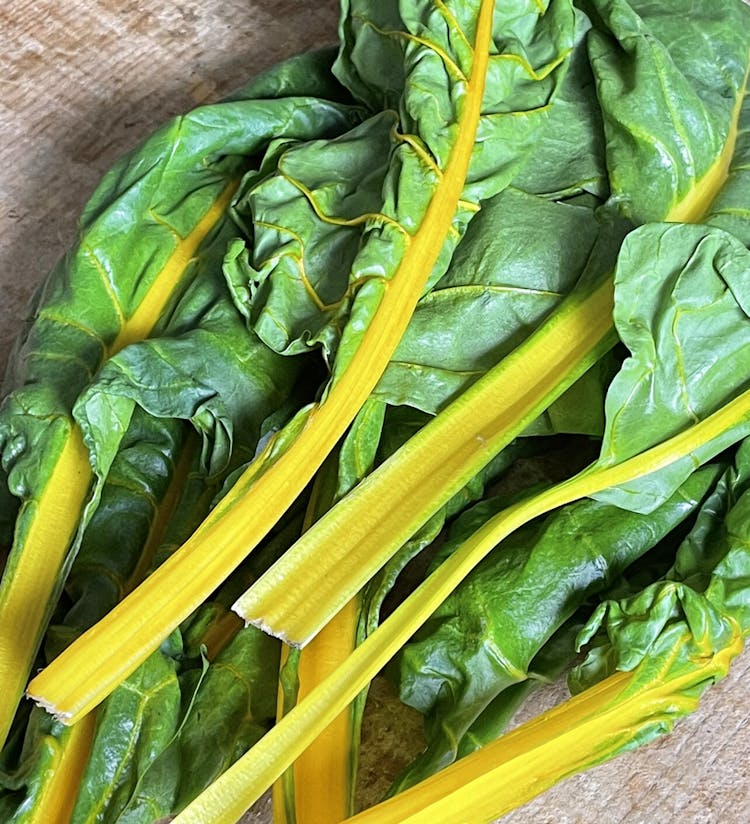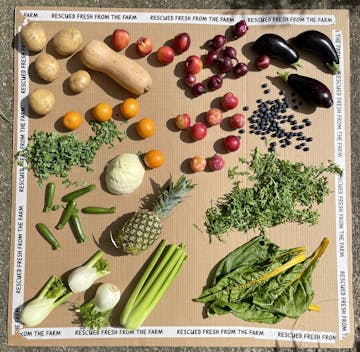8 Easy Ways To Reduce Your 'Foodprint' This Year
Here's our guide on how to reduce your foodprint during your weekly shop or when you're using up the food in your cupboard.

Our 'foodprint', a term coined by the Earth Day campaign, measures the environmental impacts of growing, producing, transporting, and storing our food.
REDUCE THE MEAT YOU EAT
Cutting down on how much meat you eat is one of the most effective ways to reduce your environmental footprint. Animal products contribute 58% of all food emissions, even though they make up a much smaller percentage of our calories. Overall, cows raised for beef have the largest carbon footprint of all foods as they require so much water, land and feed. Switching to Meatfree Mondays is a simple way to start changing your meat consumption.
Don't know where to start? We've got you covered:
1. 5 Of The Best Vegetarian Slow Cooker Recipes
2. 8 Satisfying Vegetarian Dinner Ideas For Every Palate
3. Our Favourite Veggie Sandwich Filling Ideas
EAT MORE PLANT-BASED PROTEIN
Replacing heavy-carbon meats like beef or lamb with more sustainable protein sources nearly always improves the amount of land used, water consumption, carbon emissions, soil degradation and water pollution per gram of protein. Pulses are a great way to get some much needed protein, check out this blog post to see how you can use them every day. Plant-based protein sources like tofu, beans, peas, and nuts also have a very low carbon footprint. Experiment with tasty recipes that replace meat with other ingredients.
GROW YOUR OWN PRODUCE
Cut out food miles and the use of environmentally harmful fertilisers by growing your own food at home. It's such a satisfying feeling to eat food you've grown yourself. Not everyone has loads of garden space or an allotment, but if you have room on your windowsills you can grow herbs or different veggies in pots.
We have loads of guides on growing produce at home, here's just a few:
1. 5 vegetables you can easily grow in a pot
2. Vegetables you can grow in the shade
3. How to grow garlic at home
CUT DOWN ON PLASTIC PACKAGING
Single-use plastic wrapping is rife in our food system, as it keeps food fresh for longer while it's transported and stored in the supermarket. But reducing the plastic you use yourself is always a win for the planet. Avoid individually-wrapped produce when you can. Look for your nearest bulk buy store, shop at a local farmers market, take reusable produce bags to the supermarket and pack your sandwiches in a box instead of cling film. Don’t worry about any plastic in your Oddbox – after all, it had already been made and wrapped to go to the growers’ usual customers before it reached us. Rescuing it is better than letting that fresh fruit & veg inside that packaging go to waste.
Refill shops a great way to cut down on plastic use. Here's a beginners guide to refill shops.
LOCAL IF YOU CAN
Buying food that wasn’t flown from abroad is an instant way to cut down on your food miles and lessen your carbon impact. This is why ‘local’ is usually a really important metric to measure our foodprint by. But it isn’t always. For instance, sometimes our food may have been grown abroad but it’s surplus. In this scenario, saving the food and all the resources that went into growing it is more responsible than watching it be wasted, with food waste being one of the biggest contributors to climate change.
EAT IN SEASON
Buying local produce can go hand-in-hand with eating in season. Food that's in season generally needs less energy and water to grow. When you eat more of the crops farmers have in abundance, you'll gain an appreciation for the natural seasons. What's more, when food is in season it's usually cheaper and produces more flavour. Here's a handy guide to what's in season in the UK each month.
CUT BACK ON DAIRY
Dairy contributes the second-largest amount of individual greenhouse gas emissions after meat. Exploring the countless types of plant milk available can bring more interesting flavours and textures into your diet. Plant milk isn't always superior - almond milk emits 10 times fewer greenhouse gases but still uses 17 times more water than cow’s milk per litre. Oat and soya milk, however, need less water and emit fewer carbon emissions than dairy milk.
You can always swap out any dairy ingredients for oat or soya alternatives, why not give these recipes a go?
1. Persimmon Chocolate Dessert
2. Chia Seed, Rhubarb & Vanilla Pancakes
3. Apple & Peanut Butter Cookies
RESCUE 'UGLY' FRUIT AND VEG
50 million tonnes of misshapen fruit and veg are thrown away every year in the UK and Europe. This means all of the water, space and soil nutrients used to grow the food are wasted too - along with the same emissions as almost 400,00 cars. The bottom line is, food waste hugely contributes to environmental degradation and climate change. So if you haven’t already, why not join Oddbox and save delicious food from going to waste!


